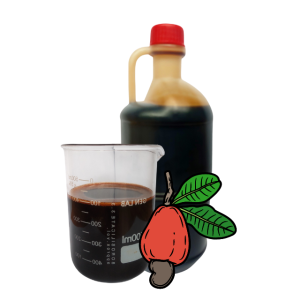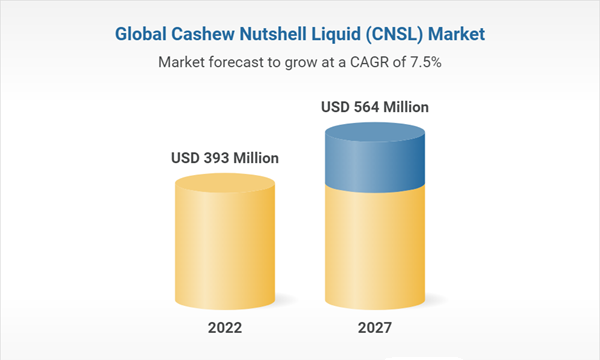Project Report For Cashew Nut Shell Liquid
Introduction
Cashew Nut Shell Liquid project report is as follows.
The shell of the well-known dry fruit known as the cashew nut served as the starting point for a variety of specialty compounds. Cashew nut shells are used to create cashew nut shell liquid or CNSL for short.
A useful byproduct of the cashew industry is cashew nut shell liquid (CNSL). The nut has a thin, 1/8-inch-thick shell, and inside is a delicate honeycomb structure that houses a viscous, dark reddish-brown liquid. In addition to undergoing all of the typical phenol reactions, CNSL also produces aldehyde condensation products and phenolic resins that are employed in applications like adhesives and surface coatings. CNSL is utilized to create a variety of polyamines that are employed as epoxy resin curing agents. CNSL and its derivatives have been employed to provide oxidative resistance for sulfur-cured natural rubber goods as well as antioxidants, plasticizers, and processing aids for rubber compounds.

The global cashew nut shell liquid (CNSL) market is being driven by factors such as growing CNSL usage in end-user industries and growing preference for CNSL over unsaturated phenols. The unpredictable raw material supply and fluctuating raw material costs are predicted to impede market expansion. However, the main issue facing the global cashew nut shell liquid (CNSL) market is the unpredictable availability of raw materials.
A liquid solution based on cashew nutshells called Polyols, for instance, was introduced by Cardolite in 2015 for use in adhesive, coating, foam, and elastomer applications. Polyols made from CNSL have unique characteristics when compared to well-known polyester and polyether polyols, as well as other natural-based polyols. The diols and polyols in this new product line have medium and high functionality.
Sample Project Report of Cashew Nut Shell Liquid
Get Completely Custom Bankable Project Report
Technical cashew nut shell liquid and raw cashew nut shell liquid make up the type section. With a revenue of USD 152.47 million in 2018, the raw cashew nut shell liquid sector overtook all other CNSL categories to become the market’s dominant player. One of the main factors propelling the market was the expanding demand for raw CNSL from the processing industries.
Market Potential Of Cashew Nut Shell Liquid
The market for cashew nutshell liquid (CNSL) is anticipated to reach USD 564 million by 2027, growing at a CAGR of 7.5% from 2022 to 2027. The market is anticipated to be worth USD 393 million in 2022. The market for CNSL is being driven by the adoption of tougher regulations as a result of growing environmental concerns.
Cardanol is produced by the cashew industry’s by-product CNSL. Anacardic acid, cardanol, cardol, 2-methylcardol, and an unidentified polymeric substance are all present in CNSL. Cardanol is employed as a natural alternative to phenol in the PF resin due to the presence of phenolic groups in it. The resins novolac and resol are created by partially substituting cardanol. The mechanical and thermal characteristics of the resultant resin depend on the amount of substitution.

Brazil and the rest of South America are included in the CNSL market there. Brazil dominates the regional CNSL market in terms of both production and consumption.
The Brazilian economy’s recovery has increased the CNSL market’s growth potential. In comparison to other regions like Asia Pacific, North America, and Europe, the demand for CNSL in this one is anticipated to increase more rapidly. Since countries like Brazil intend to enhance CNSL exports to other nations, South America offers significant growth potential for the CNSL industry. Bio-based products from CNSL are frequently employed because they can improve product performance while adhering to strict environmental standards. South America is a developing market that offers global chemical producers a huge opportunity to grow and create significant demand in the future.

